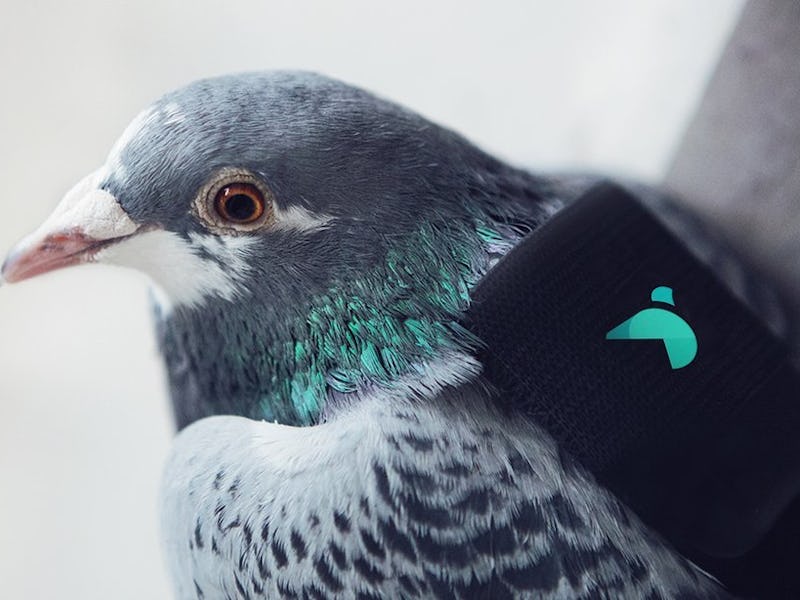The Pigeon Patrol Wants to Fight Pollution With Public Awareness
The pigeons fly around London with little backpacks that measure air quality.

In 2015 tech designers Pierre Duquesnoy and Matt Daniels were, in the best sense, struck with a feather-brained idea. They knew they wanted to bring public attention to the high pollution levels of London and they knew they wanted to somehow incorporate Twitter into the mix. Then the solution struck them: Why not use pigeons?
Thus came the creation of the Pigeon Patrol, the pollution-monitoring avian patrol group of London. The pigeons took off for the first time on Monday, wearing tiny backpacks that can detect nitrogen dioxide and ozone gases — indicators of pollution levels. On the other side of the backpack is a GPS tracker, a necessary addition to gauge what parts of the city are the most polluted. Pigeons are ideal for sweeping through the London streets because they fly as low as 100 feet and up to speeds of 80 miles per hour.
Londoners interested in knowing how much dirty air they’re sucking can either follow the pigeons at the Twitter account @PigeonPatrol or download the accompanying app created by Plume Labs.
While the creators behind the Pigeon Patrol admit that the birds are mostly a publicity stunt intended to draw attention to the city’s pollution crisis, they say awareness of the day’s pollution levels is a helpful knowledge for Londoners planning a day outside.
A 2015 study from King’s College London found that 9,500 people die every year in London because of air pollution. This number was twice the amount that was previously predicted and — on top of that — illegal in the eyes of the European Union, which has set limits on the amount of nitrogen dioxide a city can spit out.
Plume Labs isn’t content with just pigeons sensing out pollution — they want humans to do it it too. Right now the technology company is raising money to create sensors that humans can wear through Crowd Funder. With 19 days lefts, they have so far raised £3,262 of their £10,000 target. The dream is to have a legion of cyclists, runners, or “pram pushers” all collecting enough data to be the “first human-powered air pollution monitoring network.”
The bigger dream — that government officials and business leaders pay attention to all this data and make the changes necessary for less polluted skies.